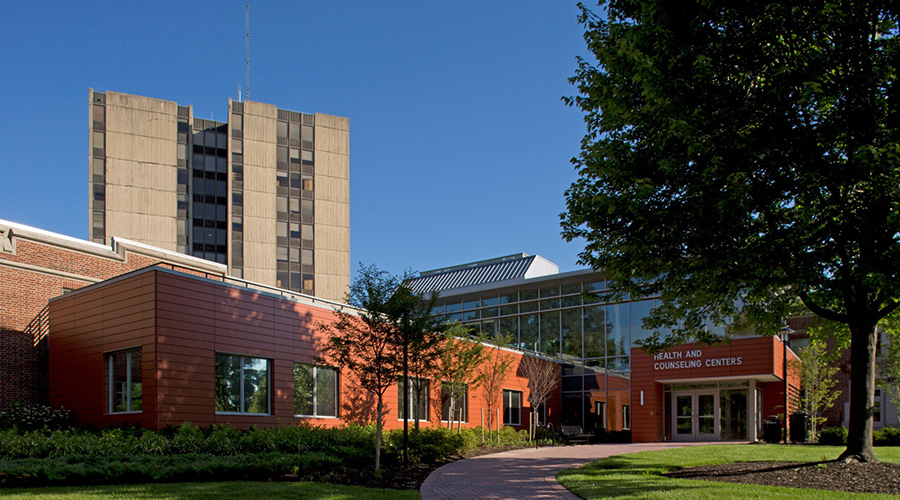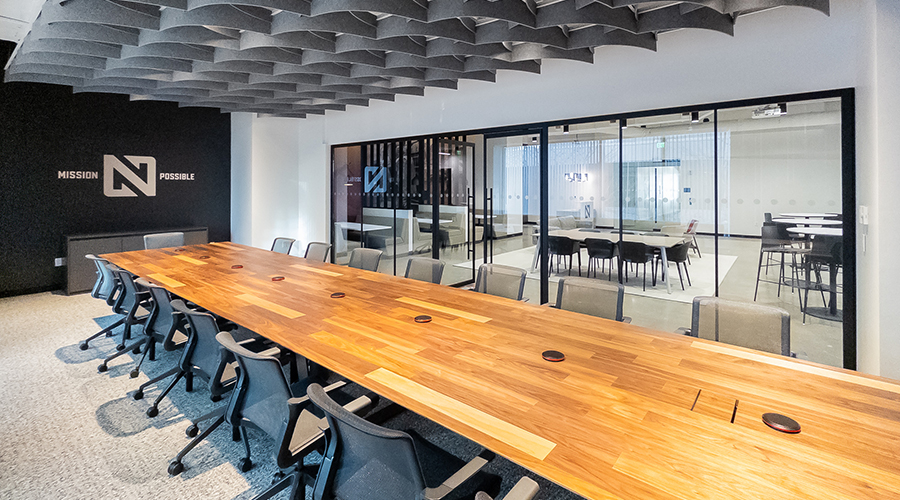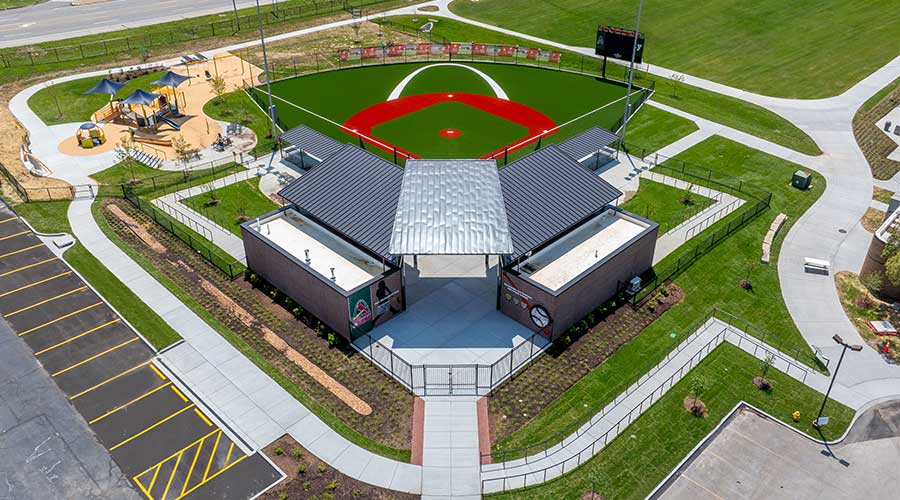 An adaptive reuse project at Towson State University converted two dormant dormitories into a student wellness community hub by connecting the existing buildings with an 8,000-square-foot building addition.Marshall CraftAssociates
An adaptive reuse project at Towson State University converted two dormant dormitories into a student wellness community hub by connecting the existing buildings with an 8,000-square-foot building addition.Marshall CraftAssociatesAdaptive Reuse Brings New Life to Aging Facilities
The process can deliver benefits and successful projects, provided owners and managers understand the array of challenges.
Owners of institutional and commercial facilities nationwide continue adapting to a swirl of changing demographics.
In surrounding communities, the public is seeking new ways to access facilities that do not involve traditional avenues, such as shopping malls and sprawling medical campuses. Inside facilities, executives, owners and managers are looking for new opportunities and locations that offer customers more convenient and appealing access to their goods and services. As these and other demographics play out, a growing number of organizations also must address the issue of how to deal with unused and underused facilities.
Enter adaptive reuse. The practice involves renovating underused or unused but still viable buildings into spaces that potentially appeal to customers more than traditional spaces. Abandoned big box retail stores become commercial offices. Shuttered strip malls turn into storefront medical clinics.
Adaptive reuse can help building owners and facilities managers create buildings that can appeal to a modern workforce, save money compared to new construction, access desirable locations and achieve sustainability goals. But the process also presents potential challenges and pitfalls that come with buildings that have seen better days.
Reuse and roles
Most building owners and facility managers are well-schooled in traditional facility improvement projects, including lighting and HVAC upgrades and roof recovery or replacement. An adaptive reuse project has all the components of a renovation project, as well as its own unique challenges.
“The difference comes in because you’re taking a building that was originally designed for a given use and adapting it for a different use,” says John Morrel, principal with Marshall Craft Associates, an architecture and design firm. “Most of the time, there are potential building code issues that come up with that.
“When we design buildings, we have to essentially declare what the building use is as part of our design process. When you change that use, there can be different fire separations and literally hundreds of different aspects of the design that can change, depending on whether the building is serving as a dormitory or an office building.”
Paying close attention to key design aspects is perhaps the most challenging issue of all for owners and managers considering giving new life to an old facility.
“Adaptively reusing an office building structure creates a lot of cost related to systems changes and upgrades that go along with that and are a driving force,” says Rob Zirkle, principal and practice group leader with HGA, a design and architecture firm. “While those kinds of projects sound really great, only a few buildings really have the infrastructural qualities that make that possible. Many, many buildings don’t. That's an adaptive reuse idea that's great in concept, but it’s hard to execute because of the complexity of the system upgrades and cost parameters.”
Emily Jelinek, a design principal with HGA, described an example from her firm’s experience when relocating one of its offices into a space that had been used for retail.
“When we were looking for space for our new DC office, we stumbled upon this space accidentally,” she says. “A retailer had just moved out of the building. The structure of the building has what’s called a wrap floor, which in retail probably wasn’t a big deal because you don't have core drills everywhere. It’s mostly for display and things like that. But when we switched it to being an office, we have all these workstations and conference rooms everywhere that require power and all the integration. We were not able to do core drills, and so we had to come up with some creative solutions to wire everything.”
For building owners and facility managers familiar with process of planning and preparation for more traditional renovations, their skills and experience can pay different types of dividends when undertaking adaptive reuse projects.
“The owner focuses on strategic, financial and high-level planning aspects, including setting the vision, financial planning, navigating regulatory requirements, approving design decisions and selecting key stakeholders,” says Mike D. Parlato, managing director with JLL project and development services. “The facility manager contributes operational expertise, assessing building condition and systems, providing insights on operational efficiency and maintenance, ensuring compliance with health and safety standards, planning for ongoing management, and supporting tenant transitions.”
Owners and managers will need to bring all of their skills and experiences to bear on adaptive reuse projects because given the nature of many facilities involved, the path to a successful project often includes several blind curves.
“With any reuse renovation project, the owner really needs to understand that there are typically unknown conditions that’ll be uncovered in a demolition and construction,” Morrel says. “It’s really important for the owner to have a realistic construction contingency going into the project. If they bid the project, they should expect that there will be some percentage of unknown costs because when you go open up walls, almost without exception you're going to find something you didn’t expect.”
For these reasons, in-house facilities teams who can bring a deep knowledge of facility and system operations to the project are especially valuable during planning and due diligence.
“You have to have a really good understanding of systems requirements related to MEP so that there's enough floor-to-floor height in order to be able to properly deal with the infrastructure requirements of a use like that,” Zirkle says. “They have to be very clear-headed about what those systems requirements are to be able to help the leasing folks and architects create the feasibility analysis to prove it out.”
Dan Hounsell is the senior editor of the facilities market.
Related Topics:













